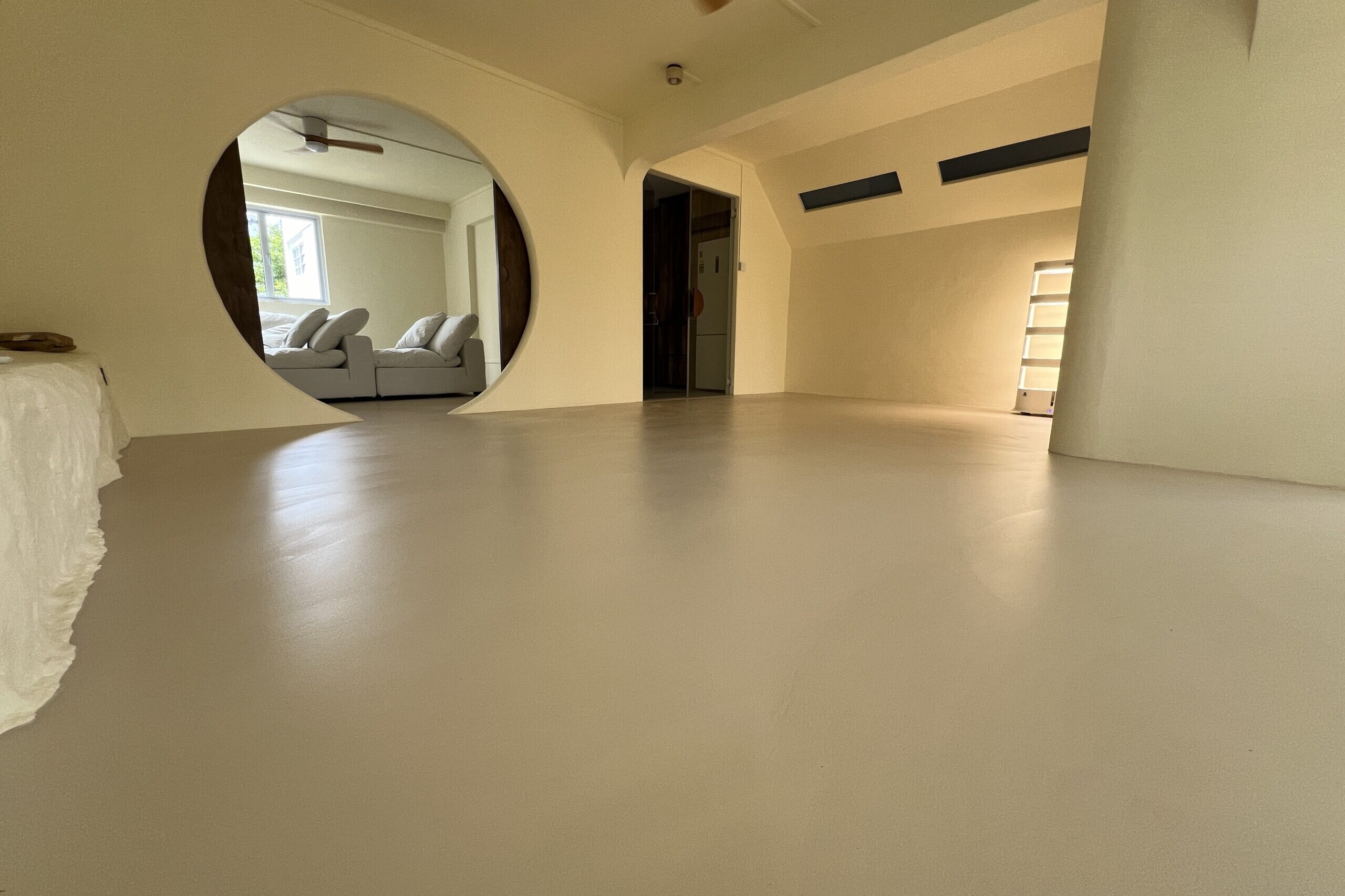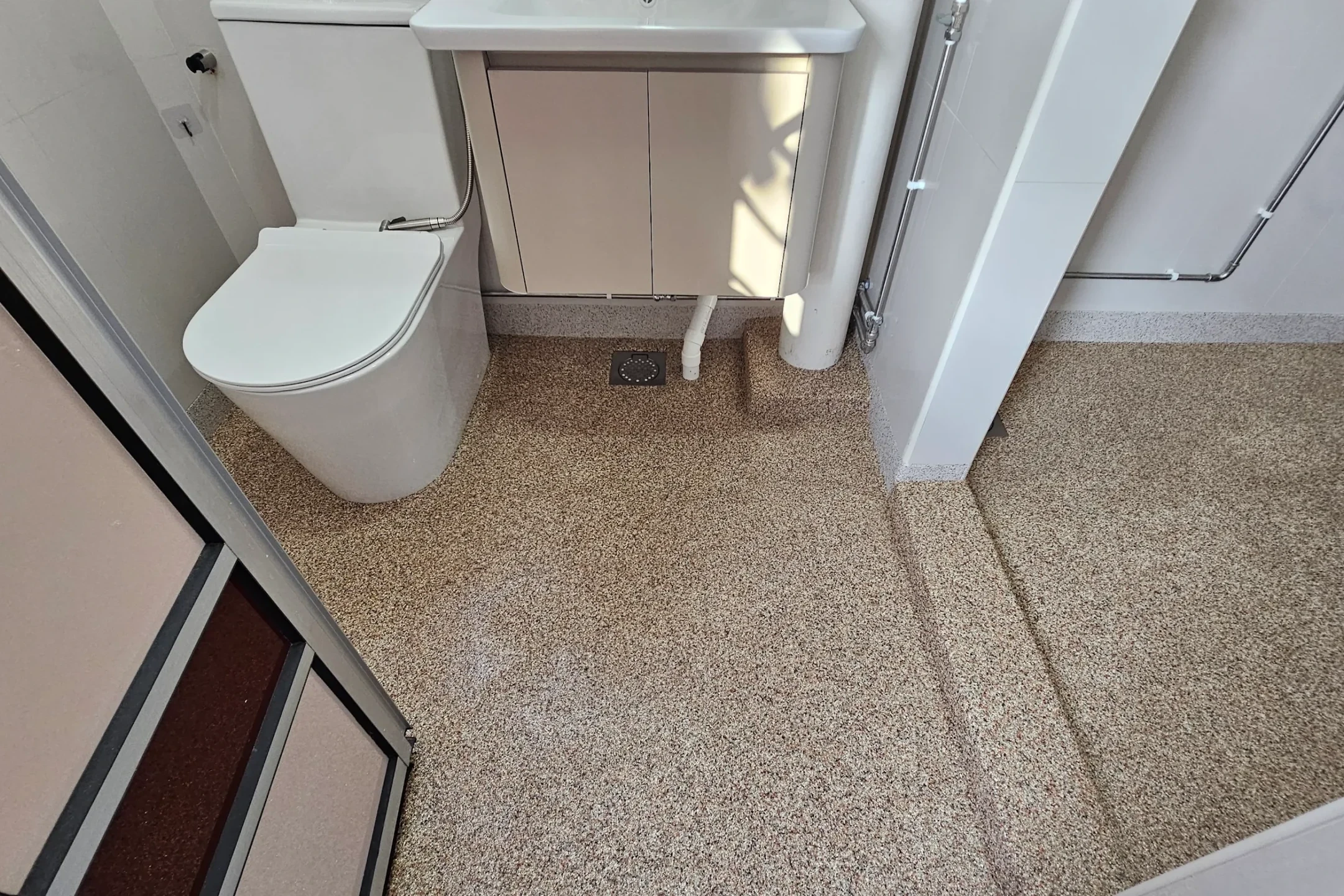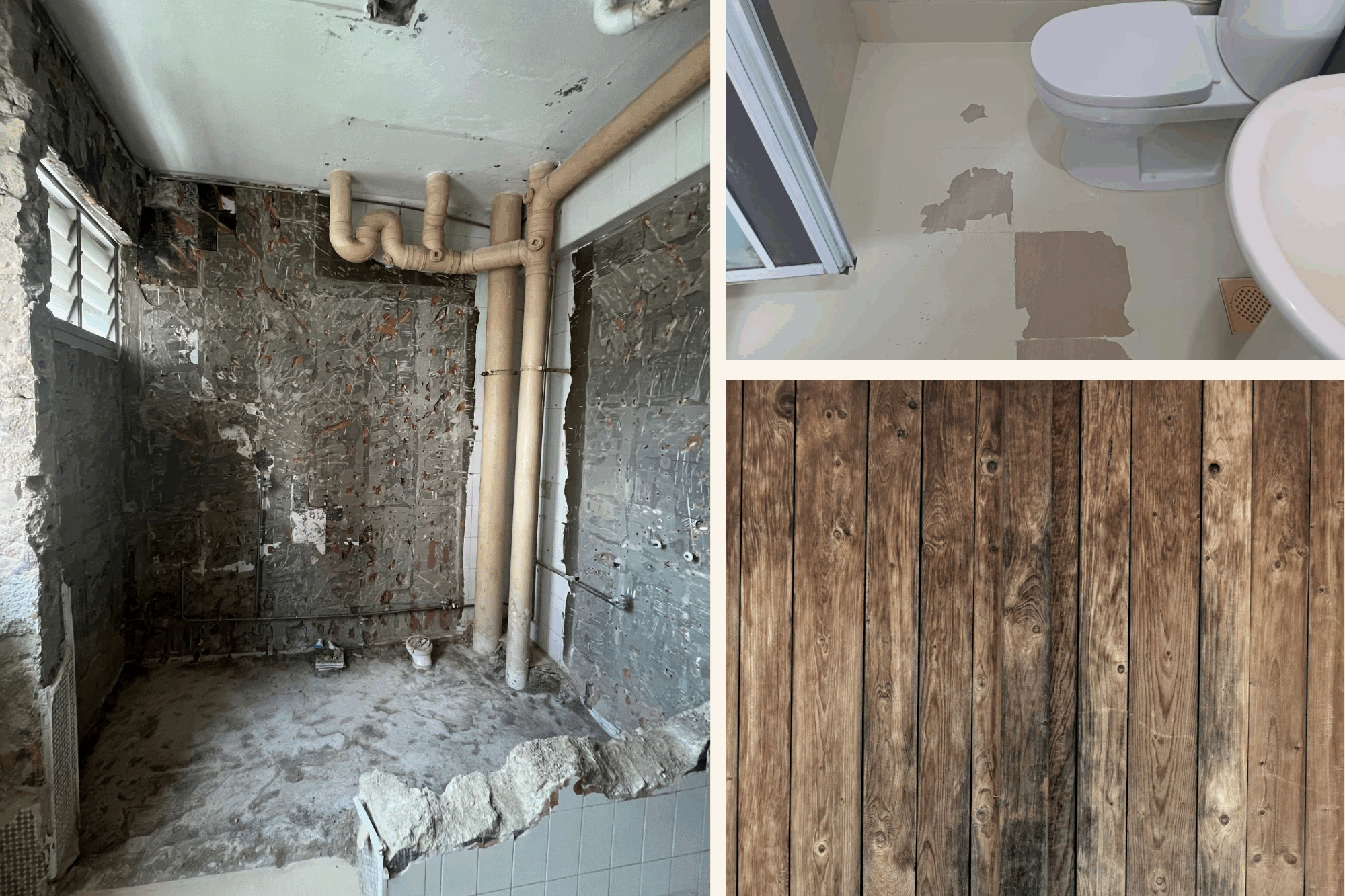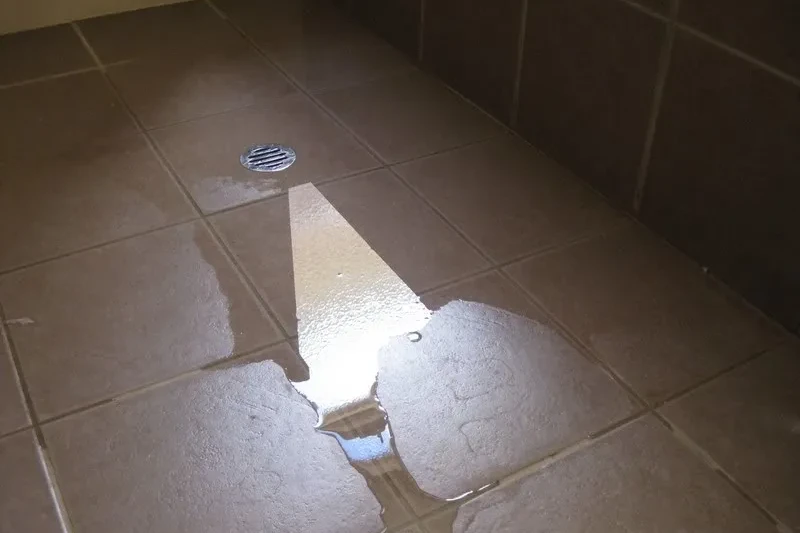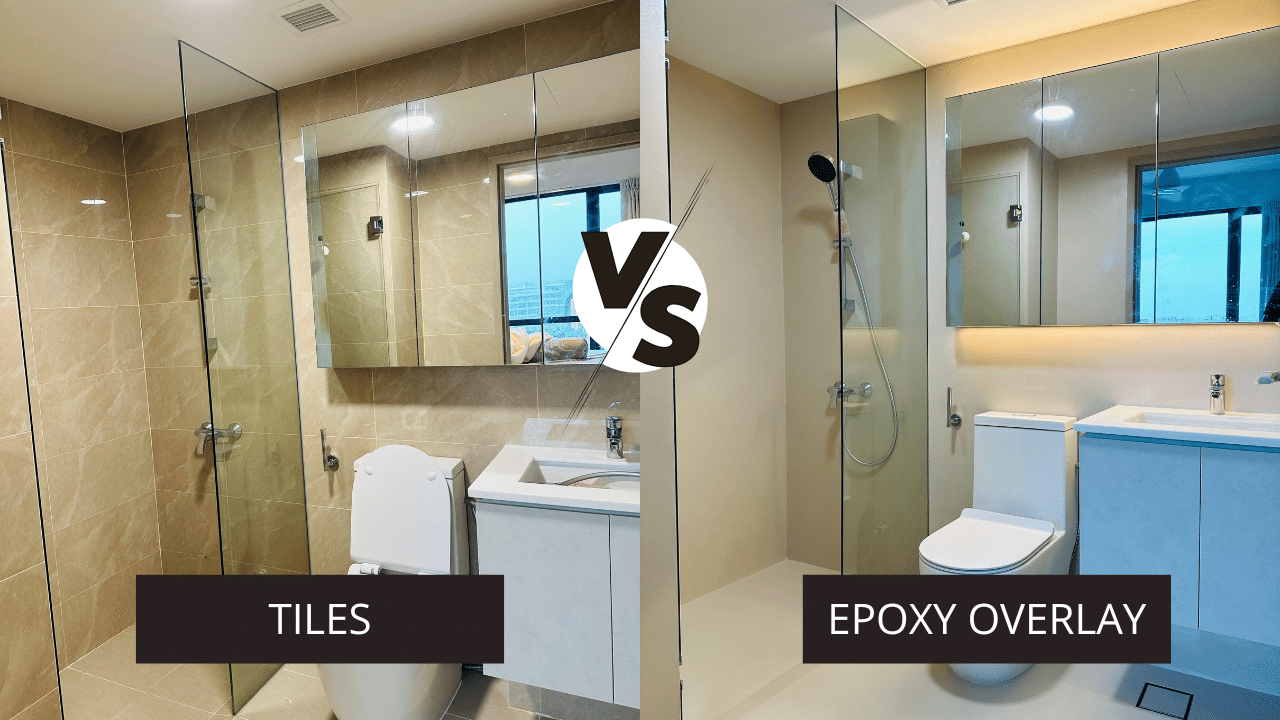
When renovating a home in Singapore, one of the common questions is: Should I choose traditional tiles or an epoxy overlay? Both options are popular, and each comes with its own strengths and limitations. The right ch
oice often depends on your budget, lifestyle, and the type of space you are renovating.
This guide compares epoxy overlays and tiles across cost, durability, maintenance, and design, and is especially useful if you’re planning a bathroom renovation in Singapore or looking for a alternative to tiles that offers both style and practicality.
Cost Comparison – Tile Hacking vs Epoxy Overlay
Tiles:
Tiles are available in a wide price range depending on the material. Ceramic and porcelain options are more affordable, while marble and natural stone are on the higher end. However, overall costs can increase when hacking and disposing of old flooring are required. In addition to the higher cost, hacking tiles can also be messy, noisy, and time-consuming.
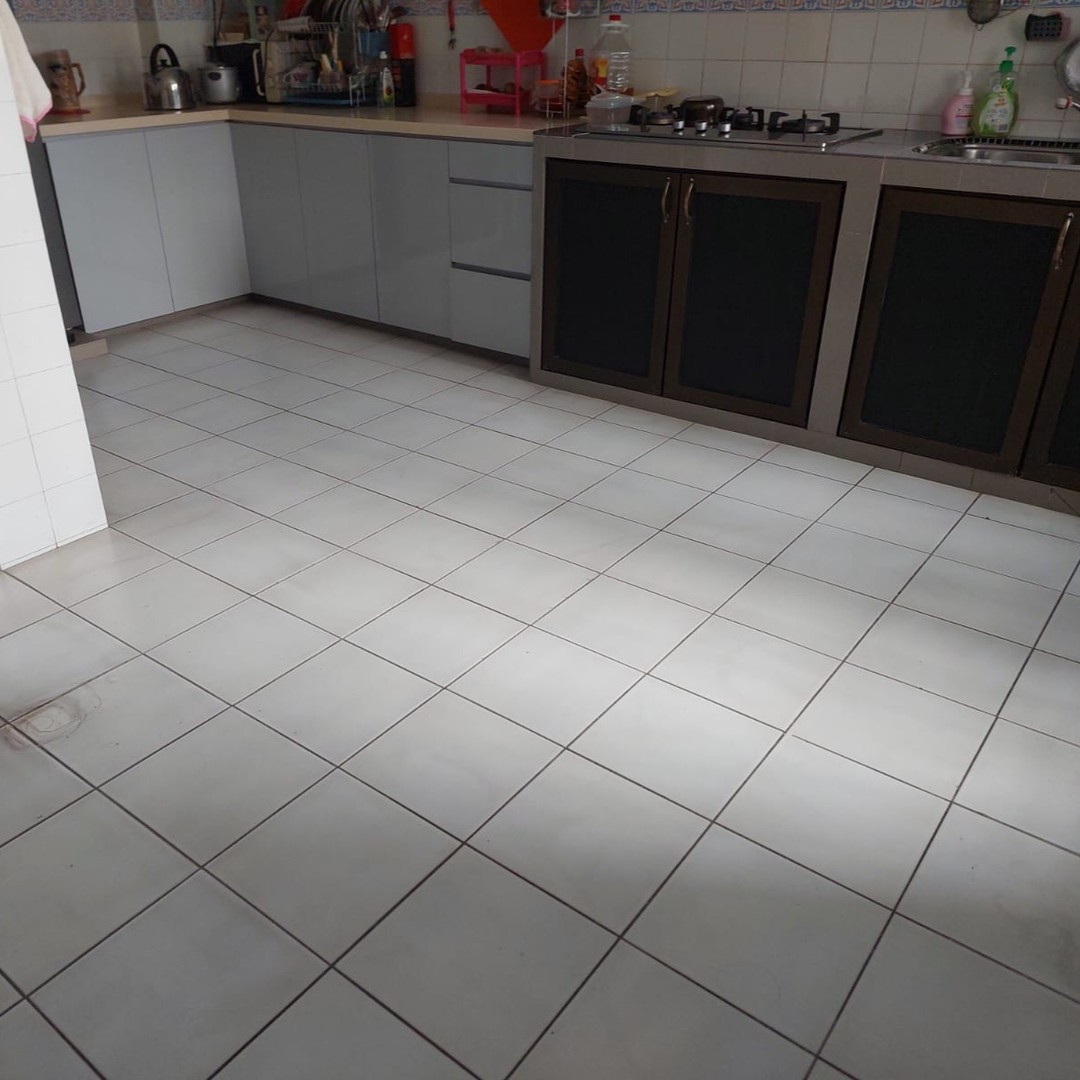
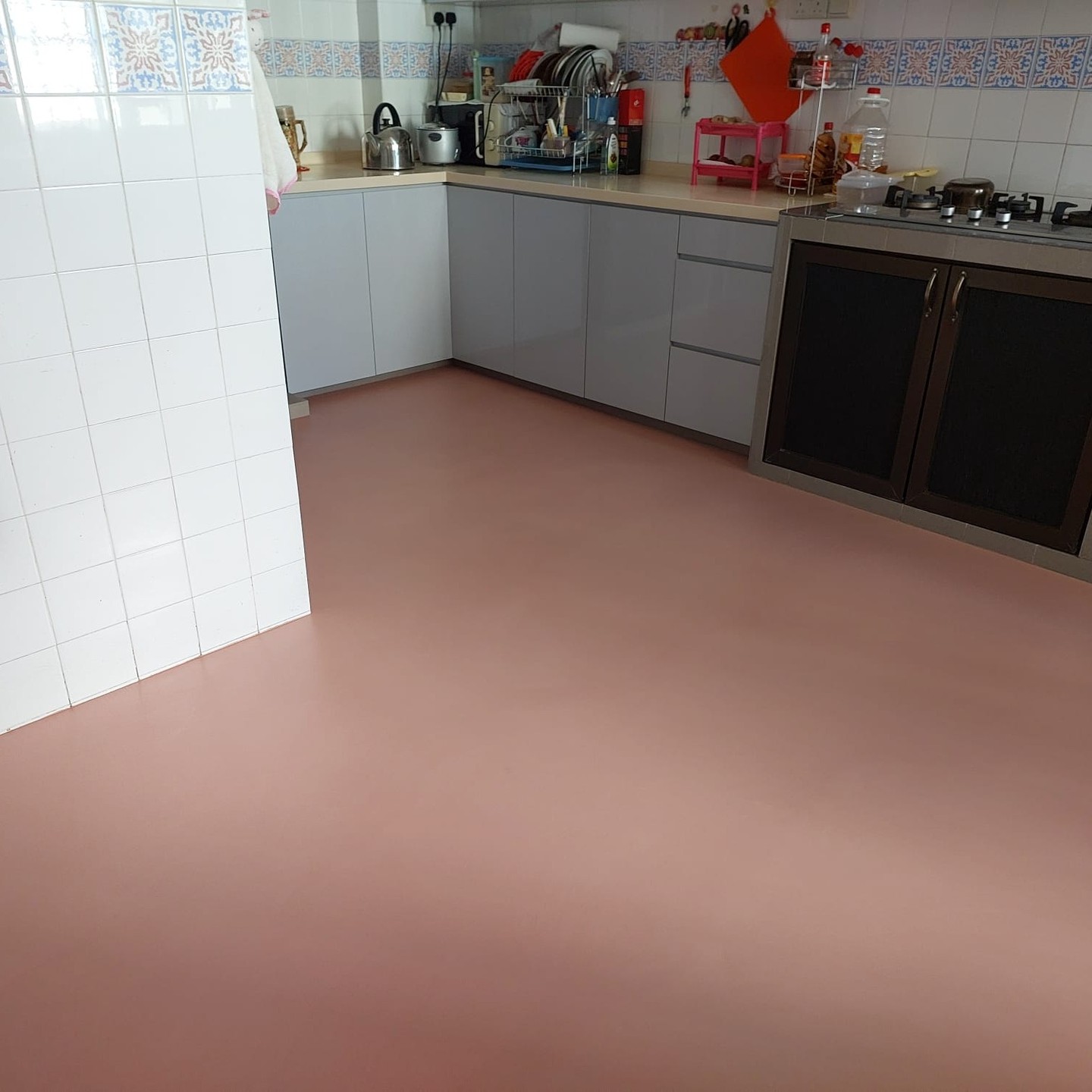
Epoxy Overlay:
Epoxy overlays are applied directly over existing tiles, which helps reduce hacking and disposal costs. This approach avoids the disruption of hacking, making installation faster and less intrusive. Pricing varies depending on the type of finish — from modern microcement-effect epoxy finishes (i.e. Ecoluxe) to decorative options like epoxy flakes. On average, epoxy is estimated to be 30–40% cheaper than full re-tiling (industry estimates, 2024–2025).
Tile installation in Singapore typically costs S$10–S$22.50 per square foot (Philip Hacking, 2024–2025), especially when hacking and disposal are included. For HDB projects, complete tiling is often capped at about S$12 per sq ft (Tiling.sg). Basic tile materials can start from as low as S$3 per sq ft (Floorfitters.biz).
Maintenance
Tiles:
Tiles are generally durable and can last for decades if properly installed and maintained. Porcelain and homogeneous tiles, in particular, are known for their scratch resistance and low water absorption. However, homeowners should be aware of a few common maintenance issues:
- Grout upkeep: Grout lines are porous and tend to absorb dirt, moisture, and soap residue. In Singapore’s humid climate, this often leads to mould or mildew growth, which appears as dark marks between tiles. Regular scrubbing or periodic regrouting is often needed to keep grout looking clean.
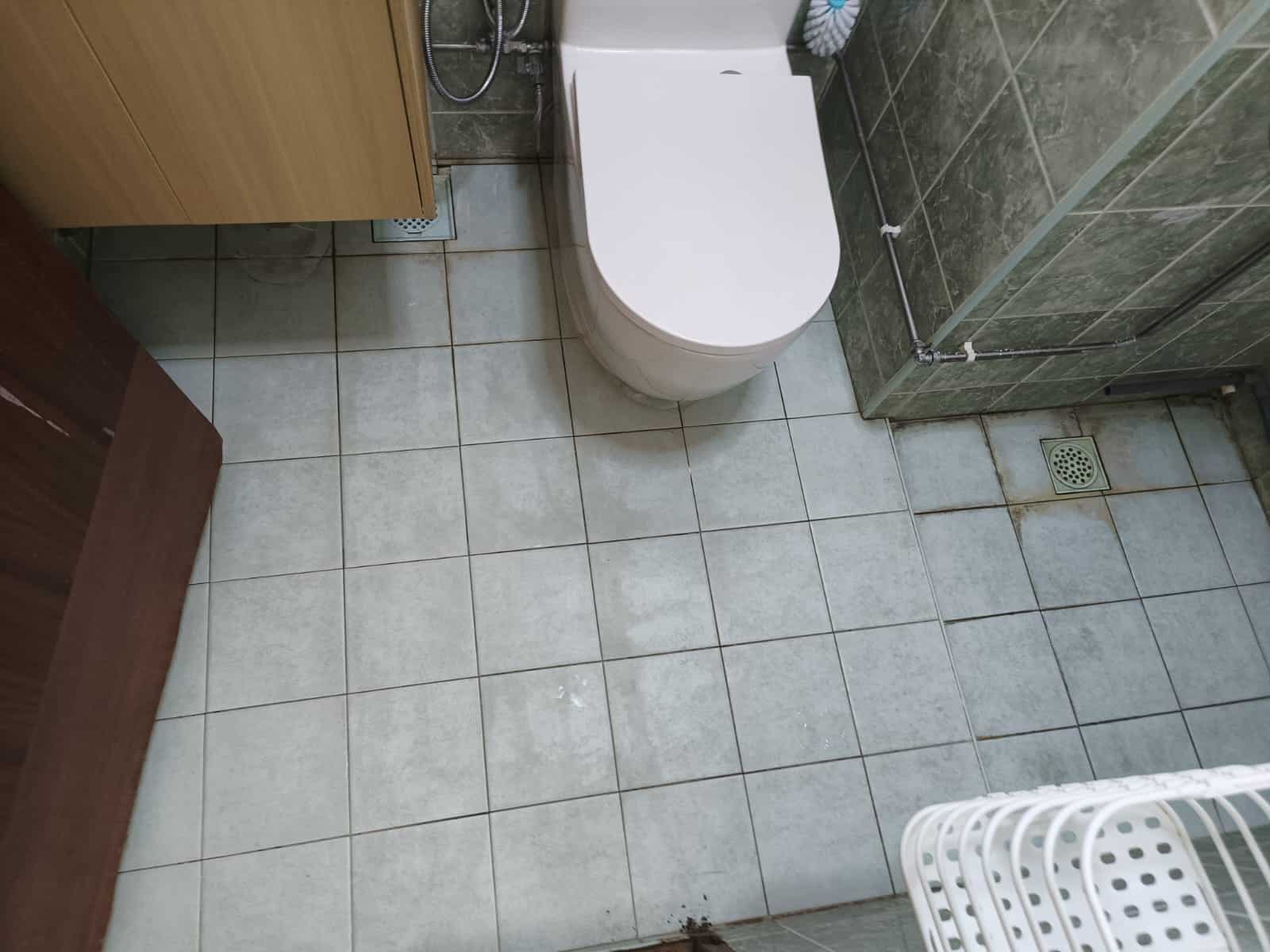
- Surface care and staining: Homogeneous tiles are dense and water-resistant, but polished versions may have microscopic pores at the surface. These are usually protected with a sealant or coating. Over time, daily wear and cleaning can wear down this protective layer, making the surface more prone to staining. This is why bathroom tiles in particular may develop dark patches or dull spots after years of use.
- Appearance over time: While the tile body itself remains durable and water-resistant, the surface can show signs of aging. Soap scum, mineral deposits, or the use of harsh cleaning products may lead to dull patches or dark marks, especially in bathrooms and kitchens. These changes are usually cosmetic and can often be managed with regular cleaning and proper maintenance.
Epoxy Overlay:
Epoxy flooring is valued for its seamless, non-porous surface, which makes it much easier to maintain than tiled flooring. Without grout lines, there are fewer places for dirt, mould, or moisture to accumulate. Still, homeowners should note the following considerations:
- Ease of cleaning: Day-to-day maintenance is simple—regular scrubbing and mopping are usually sufficient. Spills can be wiped up easily, and the non-porous surface prevents liquids or oils from seeping in and leaving stains.
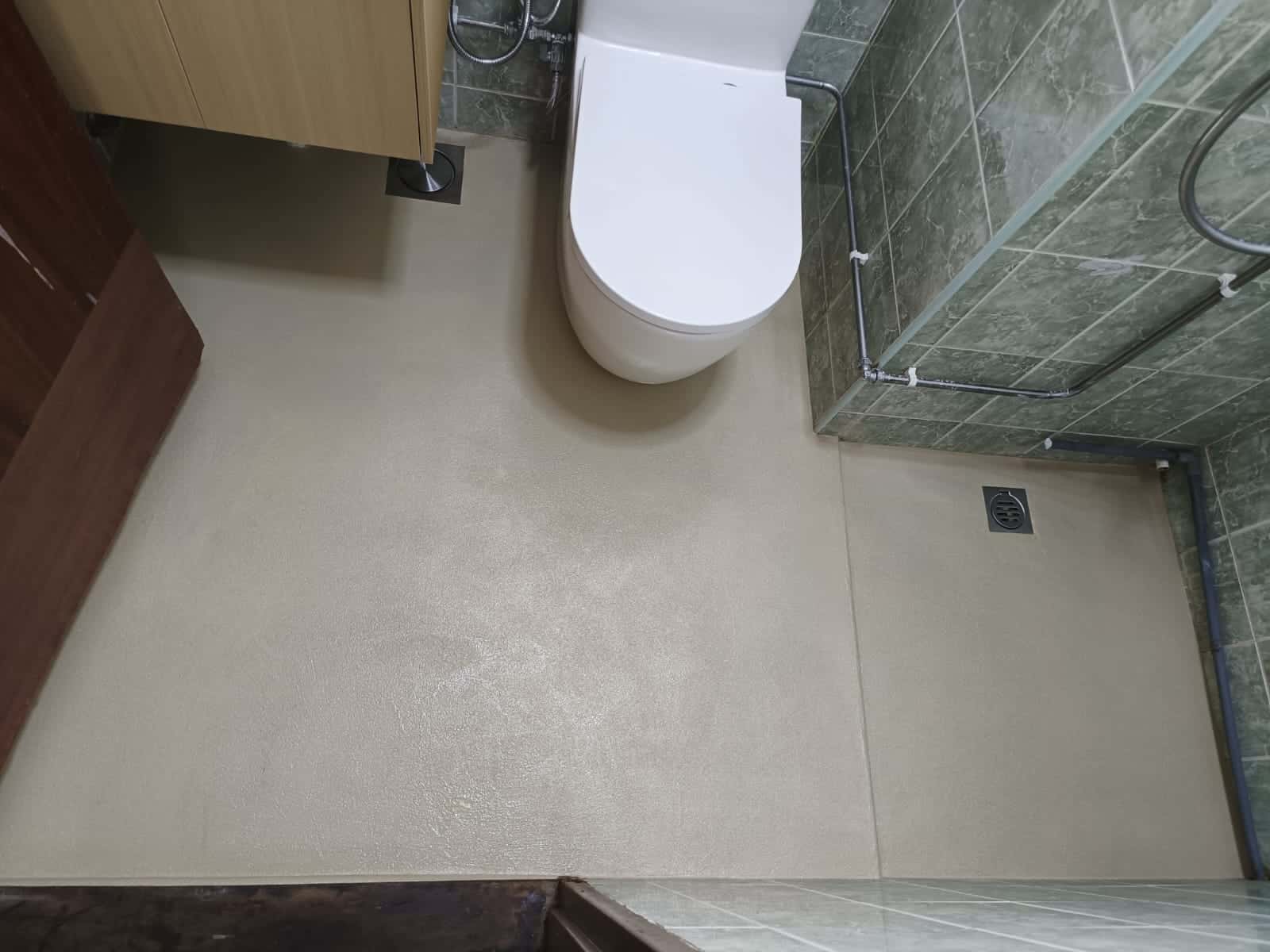
- Mould and water resistance: Epoxy is naturally resistant to water and mould growth, making it an excellent choice for bathroom renovation projects in Singapore, where constant humidity can be a concern. Its non-slip and seamless design adds safety and convenience in wet areas.
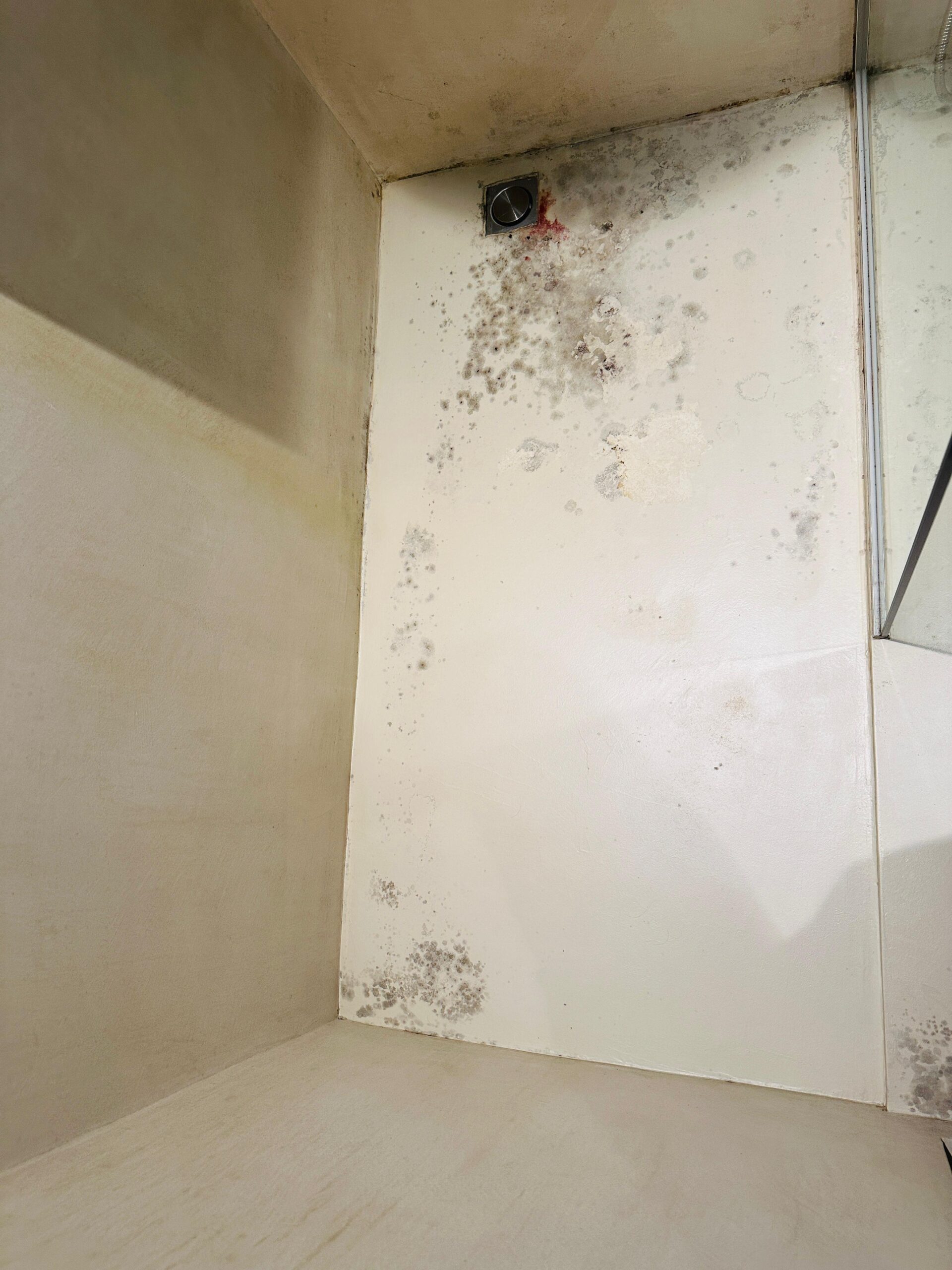
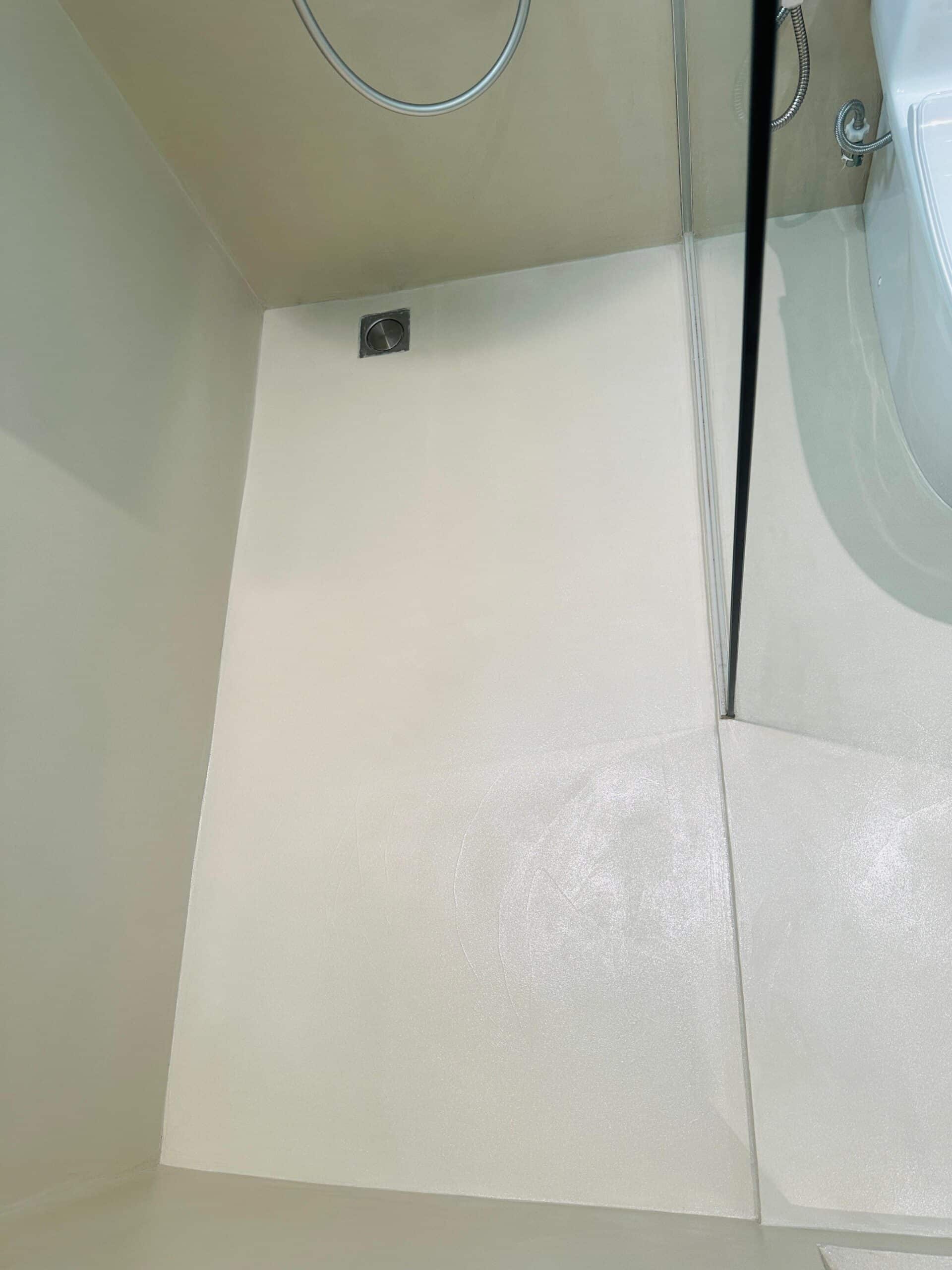
- Durability in practice: While epoxy holds up well against foot traffic and household activities, it is not indestructible. Heavy furniture dragged across the floor or sharp impacts can cause scratches, chips, or surface dulling. In such cases, touch-ups or refinishing can improve the appearance, though there may be slight colour variations compared to the original surface.
- Chemical resistance: Epoxy is resistant to most common household cleaning products, but harsh or abrasive cleaners should be avoided as they can damage the surface coating or dull the shine. This applies across different finishes, from sleek metallic epoxy styles to more subtle microcement looks
- Appearance Over Time
Epoxy flooring is also designed to be long-lasting and resistant to everyday wear. Over years of use, particularly in high-traffic areas, the surface may lose some of its original sheen or develop minor scratches. In such cases, homeowners may choose to refresh the surface for aesthetic purposes, though this is not always necessary and does not affect the flooring’s functionality.
Where Each works best
Kitchen Flooring
The kitchen is a high-traffic area where both style and practicality matter. Tiles remain a popular choice because of their heat resistance, wide variety of designs, and proven durability. From glossy finishes to patterned styles, tiles can complement both traditional and modern kitchen themes. However, grout lines can stain easily with food and oil spills, requiring more effort to maintain their appearance over time.
Epoxy overlays provide a seamless, grout-free alternative that simplifies cleaning and maintenance. One of their strongest advantages in kitchens is anti-slip performance — a vital safety feature in areas prone to spills. In addition, epoxy can be finished in modern microcement-effect or even matte metallic epoxy, which are trending in many HDB flooring options for homeowners who prefer a clean, industrial-inspired look. This makes epoxy flooring a practical yet design-forward option for homeowners seeking both safety and contemporary appeal in their kitchen.
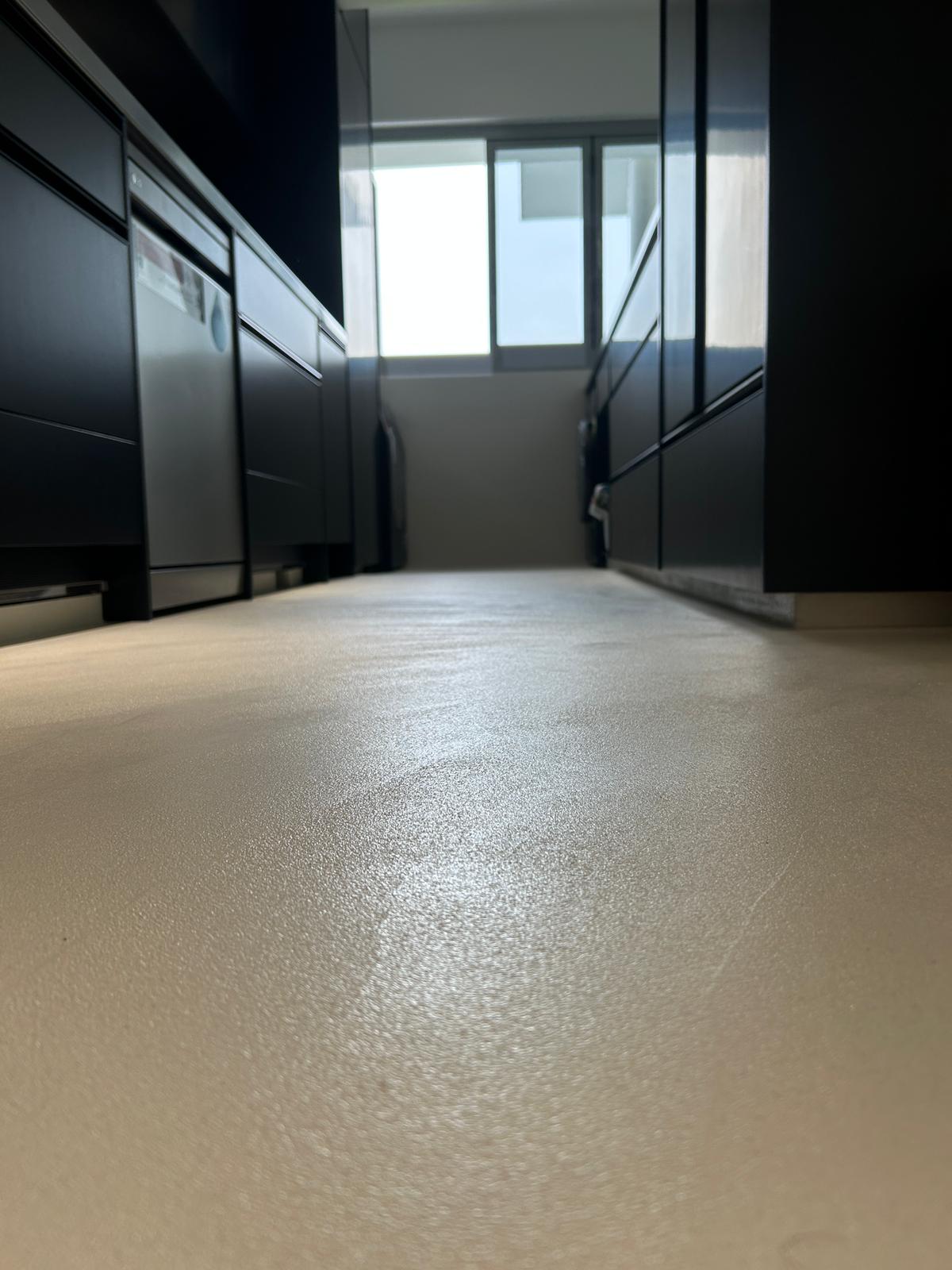

Bathroom Floor and Wall
Both tiles and epoxy overlays can perform well in bathrooms, though they bring different qualities to the space. Tiles have long been the traditional choice, offering timeless designs, a wide variety of colours and finishes, and proven durability in wet environments. However, grout lines between tiles can trap moisture and encourage mould growth if not maintained properly.
Epoxy surfaces, by contrast, create a seamless and grout-free finish, making them an ideal alternative to tiles for toilet renovations in Singapore. Many finishes can also be formulated with non-slip properties, which improve safety. This feature can be particularly important for households with young children or elderly family members, where slip prevention is a priority.
Living Room & Bedroom flooring
If you’re seeking a wide range of textures, colours, and traditional design styles, tiles remain a versatile option that can complement both classic and modern interiors. Epoxy flooring, by contrast, provides a seamless and contemporary finish with minimal grout lines, making it easier to maintain.
From a comfort perspective, tiles tend to feel cooler underfoot, which some people find refreshing in Singapore’s warm climate. Epoxy surfaces generally maintain a more neutral temperature, which may be more comfortable for those who are sensitive to cold floors. This can be an important consideration for elderly residents, who often prefer flooring that does not feel cold underfoot and may otherwise rely on slippers for added comfort.
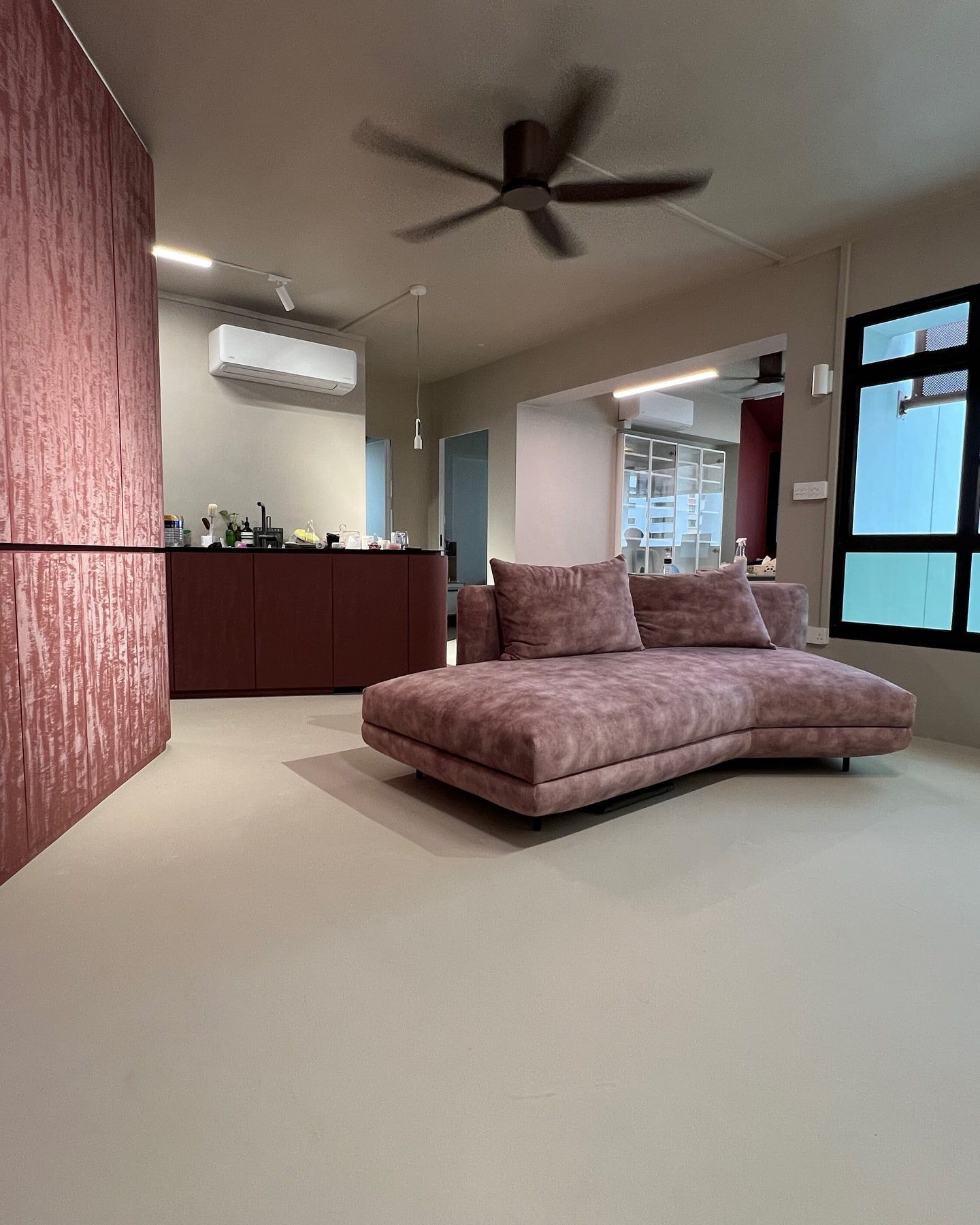
Conclusion
Both tiles and epoxy overlays have their own strengths. Tiles offer a wide variety of styles, textures, and a familiar look that has stood the test of time, while epoxy flooring provides a seamless, modern finish that is easier to maintain and better suited to humid environments. The right choice ultimately depends on your budget, lifestyle needs, and design preferences.
If you’d like to explore how these epoxy options look in real spaces, visit our showroom to explore different finishes in person — from matte metallic epoxy to decorative epoxy flakes and microcement-effect overlays — and discover which flooring solution works best as a stylish tiles alternative for your home.
Related Posts
June 18, 2025
What is an epoxy overlay and why is it a popular choice in Singapore now?
Sticky
An epoxy overlay is a layer made from epoxy resin that’s applied over existing…
June 19, 2025
PebblePro+ by Obalay: Turn Your Home Into a Sanctuary—with the Natural Touch of Pebble floor
PebblePro+ is a premium epoxy pebble overlay, made from a curated mix of…
June 19, 2025
Overlay Reality Check: What Areas Are Off-Limits?
Epoxy overlays can be applied on most firm and solid surfaces, including tricky…
June 18, 2025
What Is Water Ponding and What Can You Do About It?
Water ponding refers to the collection of water in some spots on the floor…
